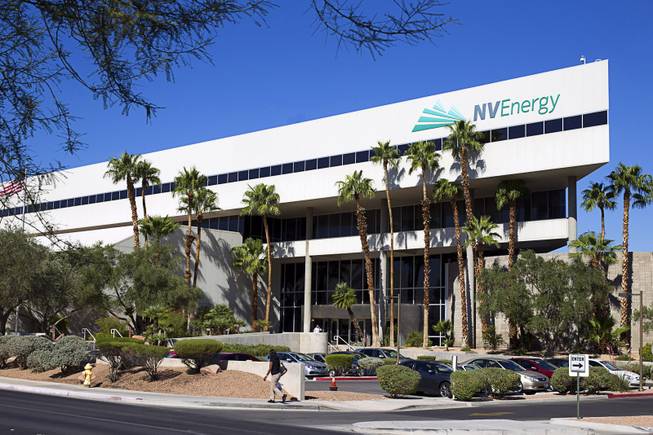Tuesday, March 16, 2021 | 4:29 p.m.
The head of NV Energy assured the Clark County Commission and customers that power outages like the one that crippled Texas after a devastating winter storm last month could not happen here because Nevada’s grid is regulated and regionally interconnected.
“I know one thing that's on a lot of people’s minds is what happened in Texas, and could what happened in Texas be repeated here in Nevada? Could we experience the same thing?” NV Energy President and Chief Executive Doug Cannon told the commission today. “We are in a very different position here in Nevada than what they were experiencing in Texas.”
Cannon ran down the fundamental differences between Nevada and Texas, where exceptional cold in February froze power plants that were not winterized.
Power was knocked out to nearly 4.5 million Texas homes and businesses, plunging much of the state into darkness for days. More than 50 people died, mostly from hypothermia.
Nevada’s energy grid is connected to neighboring Western states, allowing exchanges when it’s economically ideal or needed for reliability. It is a more diversified system than Texas’ deregulated free-market system.
Generation, transmission, pricing and distribution for about 90% of the state’s population are handled by a single utility, NV Energy, and overseen by the state’s Public Utilities Commission. Nevada voters rejected deregulation in 2018.
NV Energy’s proposed Greenlink initiative, which seeks to improve reliability and transfer capability for renewable energy sources and the system overall, is pending before the PUC. Some decisions expected next week, Cannon said. About 29% of energy generated in Nevada comes from renewable sources.
“In addition, we’re used to working in extreme environments,” Cannon said. “We have the extreme heat here in Southern Nevada, we get extreme cold in Northern Nevada, and we prepare our power plants to be able to operate under either of those contingencies.”
The utility has developed natural disaster contingencies for extreme weather events like monsoons.
After a summer storm felled about 30 power poles along Boulder Highway in 2018, NV Energy now places steel-reinforced poles at regular intervals amid runs of wooden poles. The plan is meant to interrupt the domino effect of falling poles.

